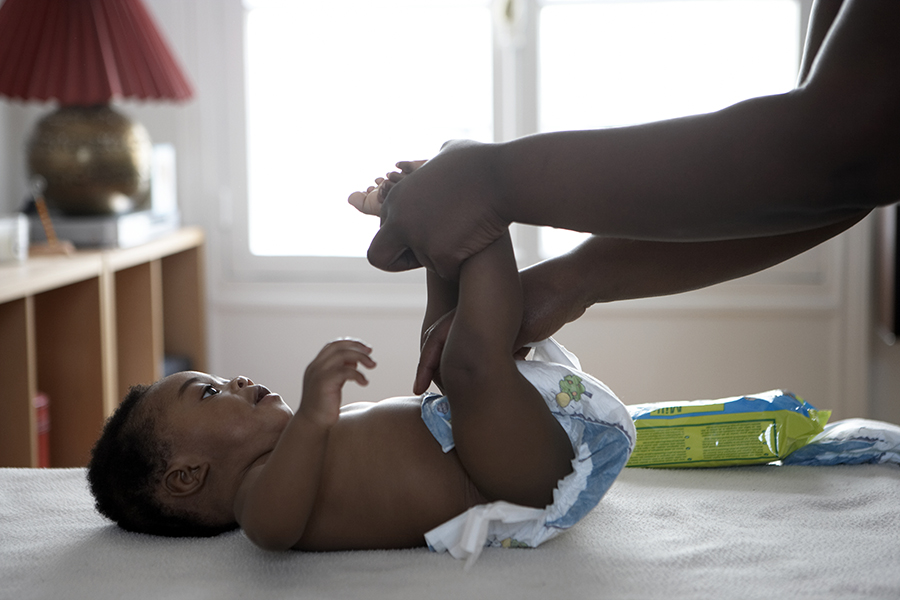How to Choose A Diaper That Is Right For Your Baby
Posted by Renee Reintzel on Oct 28th 2025

With a wide array of diaper options available, selecting the perfect one can be daunting. Parents seek diapers that are budget-friendly yet effective. When considering baby diaper fit, different types of diapers, and the baby diaper size chart, how do you determine the essential feature in a diaper?
The answer is simple: all of these factors are crucial. However, the most decisive element is fit. Fit impacts everything from comfort to effectiveness. Read on to learn more about how to choose a diaper that fits your baby perfectly.
Even if the packaging suggests the right size, a diaper can still be too big or too small. A poorly fitting diaper can lead to leaks, gaps, and discomfort, highlighting why baby diaper fit is paramount.
Are All Babies the Same Shape?
Definitely not! Babies vary significantly in size and shape. Within their first year, they grow considerably in length and weight, presenting different challenges for diaper sizing. So, when choosing a diaper, it’s crucial to ask: does it fit well?
Why is Fit so Important?
Fit is vital because it relates directly to the diaper's main function: absorbing waste effectively. A poor fit can lead to:
1. Skin damage from prolonged wetness (urine). Wet skin can become macerated, weakening its protective barrier, leading to irritation and infection. A well-fitted diaper helps prevent this by keeping the skin dry.
2. Damage from fecal enzymes. Feces contains enzymes that can damage the skin upon contact, causing painful irritation. A secure fit helps keep everything in the diaper.
3. Messy cleanups. Diaper blowouts can soil clothing and furniture, making fit essential to prevent such incidents.
4. Baby discomfort. Leaks result in wet, sticky, and cold sensations that no baby enjoys. A snug fit ensures your baby stays comfortable.
Are All Diapers Created Equal?
While diapers may seem similar, each has unique features. Some offer wetness indicators, others boast superior absorbency, and some focus on softness. Understanding these differences, along with a diaper sizing guide, can help find the right fit to prevent leaks and blowouts.
Leaks and blowouts often occur due to gaps in the waist or legs. Even with the most absorbent diaper, an improper fit will lead to leaks. Each brand offers different fits, so use a diaper sizing guide to ensure the best fit for your baby’s unique shape. Here’s a look at some popular brands:
Huggies
For babies with chunky thighs, Huggies or Kirkland diapers might provide a better fit. They offer more stretch and a higher back, ideal for preventing blowouts.
Pampers
For slender babies, Pampers might be a better choice. Known for their higher backs and narrower fits, they offer various lines such as Swaddlers and Cruisers, though their sizing can be confusing for new parents.
Cuties
Comparable to Kirkland, Cuties are budget-friendly and effective in leak protection. They are latex, lotion, and fragrance-free, offering a gentle option for sensitive skin.
How to Choose the Right Size Baby Diaper?
There are many different types of diapers and brands, so make sure to check the diaper sizing guide. Diaper brands provide size charts based on weight and age, but your baby's shape is crucial. A diaper may fit the weight chart yet still be too large or small. When unsure, opt for a size that offers a snug fit without gaps, using a baby diaper size chart for guidance.
How to Prevent Overnight Leaks?
To prevent leaks at night, consider:
Using “Overnights” diapers for younger children, or products like Tranquility, Goodnites, or Sleepovers for older children, which offer enhanced absorbency and higher backs.
Sizing up for nighttime. Larger diapers can hold more moisture. Ensure a snug fit at the thighs to prevent leaks, and adjust the waist tabs as needed for a comfortable fit.
Explore incontinence youth products (newborn to 5T) here.
Ultimately, how to choose a diaper is about more than brand or price—it's about finding the perfect fit. Consult a diaper sizing guide to avoid leaks and ensure comfort for your baby.

